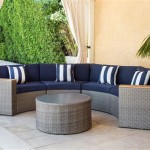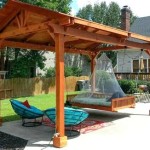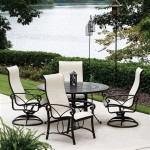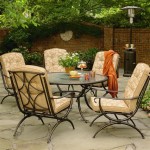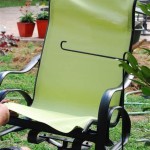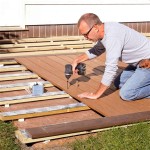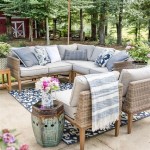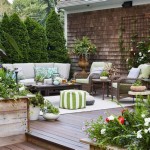Optimizing Outdoor Living: Small Space Patio Sets
The appeal of outdoor living is undeniable. Fresh air, sunshine, and a connection with nature contribute to a sense of well-being and relaxation. However, many urban dwellers and those with limited outdoor areas face the challenge of maximizing their small patios, balconies, or decks. The selection of appropriately sized and designed patio furniture is crucial for achieving a functional and aesthetically pleasing outdoor space. This article explores various aspects of small space patio sets, focusing on their design considerations, material choices, and practical arrangements.
Prioritizing Functionality and Space Efficiency
The primary consideration when selecting a patio set for a small space is functionality. Every piece must serve a purpose and contribute to the overall usability of the area. Clutter is the enemy of small spaces, and unnecessary furniture will only exacerbate the feeling of confinement. Before initiating the purchasing process, an accurate measurement of the available space is essential. This measurement should account for walkways and clearance zones, ensuring comfortable movement around the furniture.
Consideration should also be given to the intended use of the patio. Will it primarily be used for dining, lounging, or a combination of activities? This will influence the choice of furniture. For dining, a small bistro set consisting of a table and two chairs might suffice. For lounging, a compact loveseat or a pair of armchairs with a small side table could be a more suitable option. Modular furniture, which can be reconfigured to adapt to different needs, is another excellent choice for small spaces.
Folding furniture provides an exceptional solution for maximizing space. Tables and chairs that can be folded and stored away when not in use allow the patio to be easily transformed into a different type of space or kept clear when not needed. Similarly, nesting tables, which can be stacked together to save space, offer versatility and convenience. When selecting folding or nesting furniture, it is vital to ensure its durability and stability. Sturdy construction and reliable locking mechanisms are essential for safety and long-term use.
Storage solutions can also be integrated into the patio furniture itself. Ottomans with built-in storage compartments can provide a place to stow cushions, blankets, or gardening tools, eliminating the need for separate storage units. Benches with hidden storage are another practical option, offering seating and storage in a single piece. These integrated storage solutions help to maintain a clutter-free environment and maximize the use of available space.
Choosing the Right Materials for Durability and Aesthetics
The selection of materials for a small space patio set is another critical factor. The materials must be durable enough to withstand the elements while also complementing the overall aesthetic of the outdoor space. Common materials for patio furniture include wood, metal, wicker, and plastic. Each material has its own advantages and disadvantages in terms of durability, maintenance, and cost.
Wood offers a classic and natural look that blends well with outdoor environments. Teak, cedar, and redwood are popular choices for patio furniture due to their natural resistance to rot and insects. However, wood furniture requires regular maintenance, such as cleaning and staining, to prevent weathering and maintain its appearance. If proper care is neglected, wood furniture can become susceptible to damage from moisture and sunlight.
Metal patio furniture is known for its durability and strength. Aluminum is a lightweight and rust-resistant option, making it a suitable choice for coastal areas or locations with high humidity. Steel is a stronger and more durable metal, but it is susceptible to rust if not properly treated with a protective coating. Metal furniture is generally easy to clean and maintain, requiring only occasional wiping with a damp cloth.
Wicker patio furniture offers a combination of style and comfort. Natural wicker is made from plant materials such as rattan and bamboo, while synthetic wicker is made from resin or plastic. Synthetic wicker is more durable and weather-resistant than natural wicker, making it a better choice for outdoor use. Wicker furniture can add a touch of elegance and sophistication to a small patio, but it may require more frequent cleaning to remove dirt and debris from the woven surfaces.
Plastic patio furniture is the most affordable option and is available in a wide range of colors and styles. Polypropylene and polyethylene are common types of plastic used for patio furniture. Plastic furniture is lightweight, easy to clean, and resistant to moisture and fading. However, it may not be as durable or aesthetically pleasing as furniture made from other materials. Recycled plastic furniture is an environmentally friendly option that offers similar benefits to traditional plastic furniture.
The choice of fabric for cushions and upholstery is also important. Look for fabrics that are specifically designed for outdoor use, such as Sunbrella or Olefin. These fabrics are resistant to fading, mildew, and water damage. They are also easy to clean and maintain, ensuring that the cushions and upholstery remain in good condition for years to come. Light-colored fabrics tend to reflect heat better than dark-colored fabrics, making them a more comfortable choice for sunny patios.
Arranging the Space for Comfort and Flow
The arrangement of the patio furniture is just as important as the selection of the furniture itself. A well-arranged patio will feel spacious and inviting, even if it is small in size. Consider the flow of traffic and ensure that there is enough space to move around comfortably without bumping into furniture. Avoid overcrowding the space and create a focal point to draw the eye and create a sense of visual interest.
One effective strategy is to create distinct zones within the patio. For example, one zone could be dedicated to dining, while another zone could be used for lounging. This can be achieved by strategically placing furniture and using rugs or other accessories to define the different areas. A small outdoor rug can help to anchor a seating area and add a touch of warmth and comfort to the space.
Vertical space is often underutilized in small patios. Adding vertical elements, such as wall-mounted planters, trellises, or hanging baskets, can add visual interest and create a sense of depth. These vertical elements can also be used to create privacy and screen off unsightly views. Climbing plants, such as ivy or clematis, can add a touch of greenery and soften the edges of the patio.
The use of mirrors can also create the illusion of more space. A strategically placed mirror can reflect light and make the patio feel larger and brighter. However, it is important to position the mirror carefully to avoid reflecting unpleasant views or creating glare. Mirrors should be placed where they will reflect natural light and enhance the existing features of the patio.
Lighting plays a crucial role in creating a pleasant atmosphere on a patio, especially during the evenings. String lights, lanterns, and candles can add a warm and inviting glow. Solar-powered lights are a convenient and energy-efficient option. Consider using a combination of ambient lighting, task lighting, and accent lighting to create a layered and dynamic lighting scheme. Ensure that the lighting is appropriate for the intended use of the patio. For example, brighter lighting may be needed for dining, while softer lighting is more suitable for lounging.
Finally, incorporating plants and greenery can transform a small patio into a relaxing and inviting oasis. Choose plants that are appropriate for the climate and the amount of sunlight the patio receives. Container gardening is a great option for small spaces, allowing for flexibility and easy maintenance. A variety of plants, including flowers, herbs, and vegetables, can be grown in containers. Consider using different sizes and shapes of containers to add visual interest and create a layered effect. Regular watering and fertilization are essential for keeping the plants healthy and thriving.

10 Furniture Sets For Small Spaces Patio

How To Choose Patio Furniture For Small Spaces Bassemiers

Halsted 5pc Wicker Small Space Patio Furniture Set Navy Or Tan

Small Space Patio Outdoor Furniture Decor Crate Barrel

Patio Furniture For Small Spaces 8 Simple Tips To Try Stauffers

Small Space Friendly Outdoor Furniture Jojotastic

Patio Small Spaces Canadian Tire

Track Your Order

Outdoor Furniture For Small Spaces Ashley

Outdoor Small Space Furniture Pottery Barn
See Also

